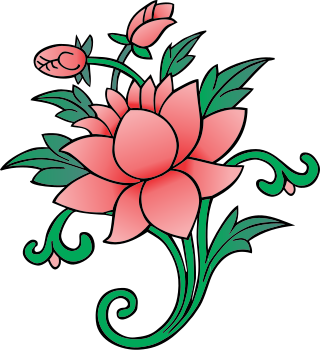Top Qs
Timeline
Chat
Perspective
Five wisdoms
From Wikipedia, the free encyclopedia
Remove ads
The Five Wisdoms[note 1] are five kinds of wisdoms which appear when the mind is purified of the five disturbing emotions and the natural mind appears.[web 1][note 2]
All of those five wisdoms are represented by one of the five buddha-families.[web 1]
The last four these five are also called the "four wisdoms" (四智).
Meaning and translations
Pañca-jñāna is rendered in English as: "five wisdoms," "five awarenesses," or "five pristine cognitions."[citation needed]
Interpretations
Summarize
Perspective
The Five Wisdoms are:
- Tathatā-jñāna, the wisdom of Suchness or Dharmadhatu, "the bare non-conceptualizing awareness" of Śūnyatā, the ultimate wisdom among the other four;[2]
- Ādarśa-jñāna, the wisdom of "Mirror-like Awareness", "devoid of all dualistic thought and ever united with its 'content' as a mirror is with its reflections";[2][note 3] This type of wisdom is a transformation of the eighth consciousness, the Alayavijnana.
- Samatā-jñāna, the wisdom of the "Awareness of Sameness", which perceives the sameness, the commonality of dharmas or phenomena.[2] This kind of wisdom is a transformation of the seventh consciousness, the Klistamanas. Through this wisdom, a Buddha sees beyond all superficial differentiations and perceives the fundamental of all things as Śūnyatā or emptiness. Such undifferentiation gives rise to equality for all beings. Hence, it is also understood as the wisdom of equality or impartiality.[3]
- Pratyavekṣaṇa-jñāna, the wisdom of "Investigative Awareness", that perceives the specificity, the uniqueness of dharmas.[2] This type of wisdom is a transformation of the sixth consciousness, and is also known as the wisdom of specific knowledge or sublime investigation.[3]
- Kṛty-anuṣṭhāna-jñāna, the wisdom of "Accomplishing Activities", the awareness that "spontaneously carries out all that has to be done for the welfare of beings, manifesting itself in all directions".[2] This type of wisdom is created through the transformation of the five sensory consciousness.[3]
The Five Wisdoms "emerge through a transformation (parāvṛtti) of the eight consciousnesses at the moment of enlightenment".[2]
Remove ads
Five Tathāgatas
Summarize
Perspective

The idea of the Five Wisdoms "underwent a considerable development" within Vajrayana Buddhism where they are "symbolized or embodied" in the Five Tathāgatas.[2]
According to Bönpo teacher Tenzin Wangyal, the Five Pure Lights become the Five Poisons if we remain deluded, or the Five Wisdoms and the Five Buddha Families if we recognize their purity.[4]
The Five Wisdoms, and the accompanying Five Buddhas, are represented in Tibetan Buddhism by the "symbolic bone ornaments".[note 4][5] The Hevajra Tantra associates the Symbolic Bone Ornaments directly with the Five Wisdoms:[note 5]
- the 'wheel-like' (Tib.: 'khor lo') 'crown ornament' (sometimes called 'crown jewel') (Tib.: gtsug gi nor bu), symbolic of Akshobhya and 'mirror-like pristine awareness' (Ādarśa-jñāna);
- 'earrings' (Tib.: rna cha) represent of Amitabha and pristine awareness of discernment (Pratyavekṣaṇa-jñāna);
- 'necklace' (Tib.: mgul rgyan) symbolizing Ratnasambhava and pristine awareness of total sameness (Samatā-jñāna);
- 'bracelets' (Tib.: lag gdu) and 'anklets' (Tib.: gdu bu) as symbolic of Vairochana and pristine awareness of the ultimate dimension of phenomena (Tathatā-jñāna);
- 'girdle' (Tib.: ske rags) symbolizing Amoghasiddhi and the accomplishing pristine awareness (Kṛty-anuṣṭhāna-jñāna);
The additional ornament spoken of in various texts related to Hevajra is ash from a cremation ground smeared on the body (Tib.: thal chen).[5]
See also
Notes
- Ādarśa is Sanskrit for "mirror", the term may be parsed into the etymon of darśana with a grammatical adposition
- Skt: aṣṭhiamudrā; Tib: rus pa'i rgyan phyag rgya
- These are elucidated by a commentary to the Hevajra Tantra by Jamgön Kongtrul.[6]
Remove ads
References
Sources
External links
Wikiwand - on
Seamless Wikipedia browsing. On steroids.
Remove ads
